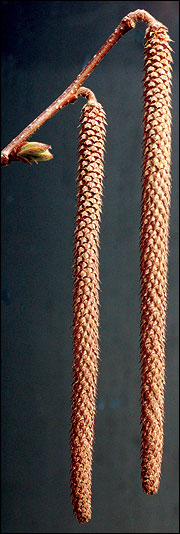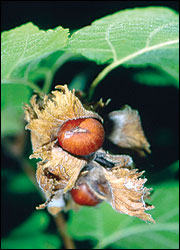Hazelnut
- Corylus americana
- American hazelnut, Filbert
Woody
 Hazelnut's thicket-forming growth habit makes it important to quail and other wildlife for cover.
Hazelnut's thicket-forming growth habit makes it important to quail and other wildlife for cover.
Chris Starbuck, University of Missouri
Description
Hazelnut is a thicket-forming, spreading shrub that can vary in height from 3 to 10 feet and occurs in dry or moist woodlands, prairies and savannas. Leaves are egg-shaped to oval, doubly serrated with five to eight veins on each side of the central vein. Fruits occur in clusters of two to six and are encased in large modified leaves called bracts. The sweet, light-brown fruits are prized by coffee drinkers and cooks throughout the world.
Bloom period
March to April
Use by bobwhites
Bobwhites readily consume hazelnuts where they are available. The dense canopy of leaves provides good summer thermal cover and escape cover from predators.







